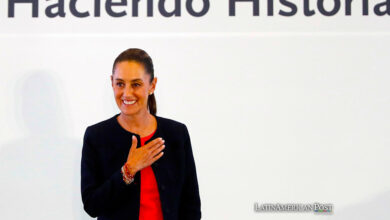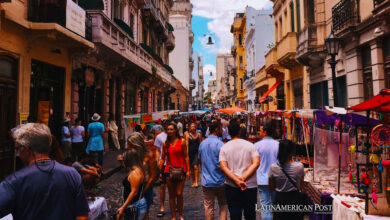Argentina and Venezuela Top the Ranking of Misery in the World
Both countries are in the top 10 countries with the greatest poverty, mainly due to their serious inflation problems.

Photo: Reuters
LatinAmerican Post | Luis Angel Hernández Liborio
Listen to this article
Leer en español: Argentina y Venezuela encabezan el ranking de la miseria en el mundo
Year after year, a ranking is made of the countries with the greatest misery in the world. This is the Steve Hanke index of Johns Hopkins University. Regularly, the least coveted positions are filled by countries at war or blacklisted by the United States or Europe, with economic sanctions, blockades, and other serious internal concerns. But, in the last list, three Latin American countries are present: Cuba, Argentina and Venezuela, the last two due to issues such as hyperinflation.
Argentine Hyperinflation
Argentina's economic difficulties are not recent. Since the deep crisis of 2001, the country has not achieved the economic stability that neighboring countries such as Uruguay or Chile have. After the crisis at the beginning of the century, difficulties continued in Argentina during the global economic crisis of 2008. However, these problems continued to drag on for more than a decade, and today they are aggravated by the global pandemic of recent years.
The Argentine economy was administered by Kirchnerism for more than ten years, almost without interruption. The good numbers at the beginning turned into chaos during the governments of Cristina Fernández de Kirchner, to which was added the debt with the International Monetary Fund, the refusal to pay, the de-capitalization and the consequent crisis reflected in inflation.
By 2023, with Alberto Fernández (and Cristina Fernández) in government, and given the ineffectiveness of Macri's economic policy, the country has seen inflation rise to historic levels. In April 2023, inflation increased by 8.4% from the previous month. Likewise, the country's year-on-year inflation in February exceeded 100%, according to data from the Argentine government. Despite this, not all items are discouraging. The Argentine economy grew 5% during 2022, according to ECLAC, while unemployment remained at 6.9%, at levels similar to those that existed before the pandemic.
However, misery, more specifically poverty, has grown over the last decade, going from 9.9% in 2011 to 39.2% in 2023. This translates into 18 million Argentines surviving in a difficult economic environment.
Hyperinflation directly affects the prices of basic inputs, not only for individuals, but also for companies that see uncontrolled increases in the costs of raw materials for production. Exports are also impacted, especially meat, dairy and cereal products, in which Argentina is a relevant global producer.
The current parity of the dollar with respect to the Argentine currency is $239 ARS per dollar. High inflation scares away capital, despite the central bank's high interest rates, which stand at 97%, the highest in four years.
You can also read: Heat Stress: the New Labor Challenge Posed by Climate Change
Galloping Inflation in Venezuela
To assign a position on the list, the Hanke index considers inflation, interest rate and unemployment, as well as GDP growth. It is a technical index that does not directly measure people's perception. It simply considers countries more or less “happy” according to the rating obtained. Venezuela, which has been at the top of the index more than six times in the last decade, is in second position in the most recent ranking. This is due to its prolonged hyperinflation which, although it has decreased, continues to be at alarming levels for any economy. In May 2023, inflation exceeded 80%, while it reached 471% annually.
Measuring the misery generated by hyperinflation in Venezuela is a difficult subject. The little or no official information adds to the deterioration of the economy that is subject to blockade and economic sanctions from the United States and Europe. However, the war in Ukraine has relaxed the sanctions and the attitude of the United States towards the Maduro regime, in order to prevent its rapprochement with Russia. This has given a break to the bankrupt Venezuelan economy. As a result, a slight economic recovery has appreciated the Bolívar, although it is still far from a level that can be considered valid for a recovered economy. Today, it is estimated that half the population (approximately 14 million people) lives in poverty. The Venezuelan exodus is a direct effect of this situation.
The currency problem became so critical that frequent increases in the minimum wage, the removal of zeros from currency, and the printing of banknotes were insufficient. On the contrary, its effects on the economy were detrimental. Because of this, President Maduro has refused to raise the salary again since March 2022, when it stood at Bs 130, equivalent to just $5 dollars, one of the lowest salaries in the world.
Venezuelans survive thanks to the support of relatives abroad or government support to purchase basic basket products, although the shortage and high demand make shopping a complicated activity. Hyperinflation makes it difficult for Venezuelans to buy meat, fruit, dairy products and, of course, imported products whose costs are impossible to cover with the current salary level. The Venezuelan government must try to attack the issue of hyperinflation in a more realistic way, no longer through the manipulation of the Central Bank, the currency and the salary, which only worsened the situation. Recovering the quality of life of Venezuelans will be a decades-long task.





